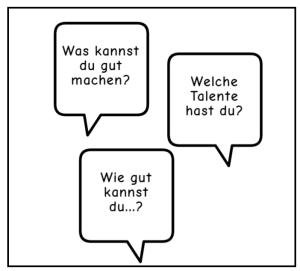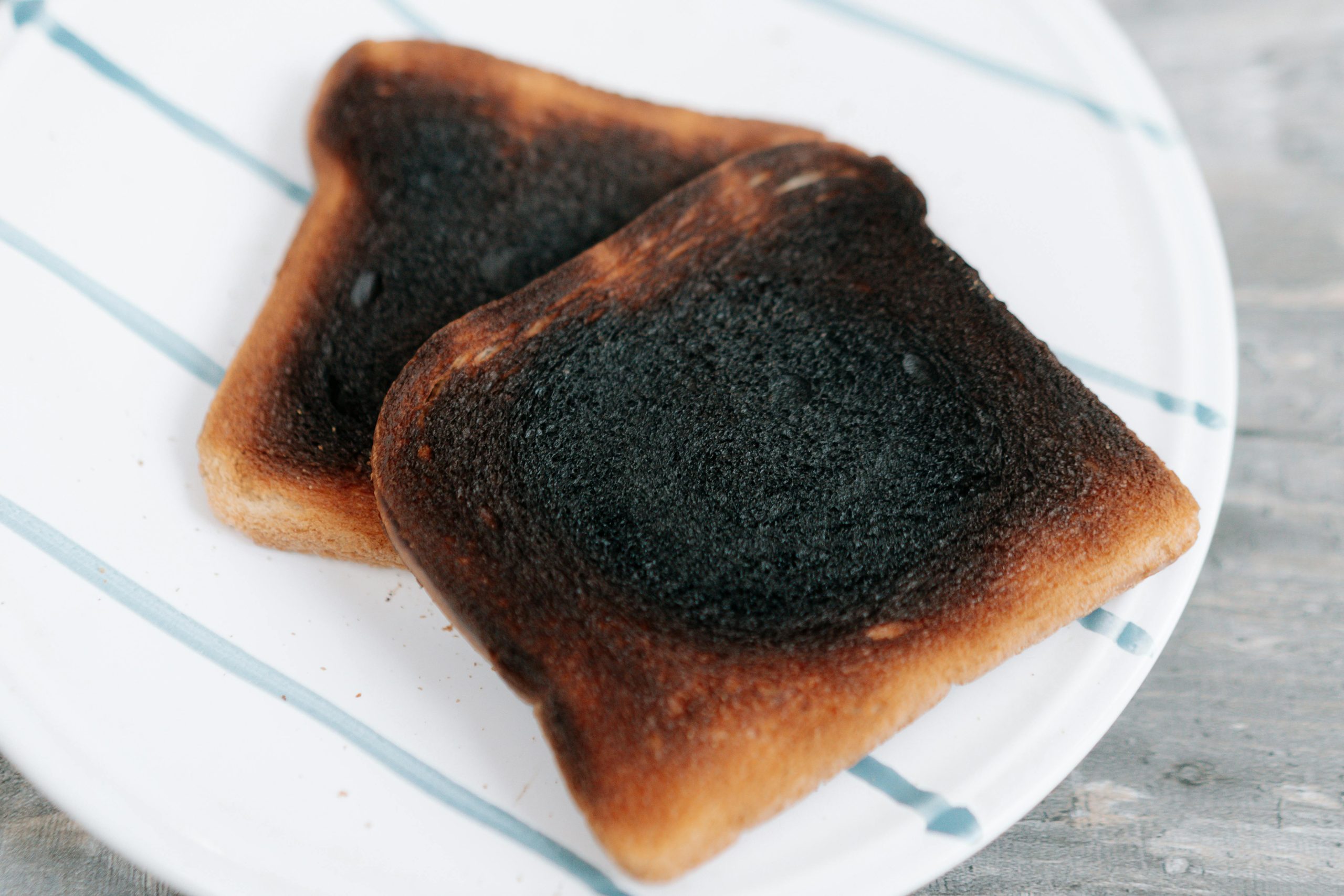4.11 Was ich gut kann – Talente

Guten Tag!
Zum Aufwärmen machen wir unseren Tagesminiplausch und eine Wiederholung.
Wiederholung
In the previous lesson, you learned some additional hobbies, how to ask others about their favorite hobby, and how to say what you like to do the best. Let’s review what you have learned.
Welches Hobby machst du am liebsten? Take a minute to write down your favorite hobby or free time activity in a complete sentence.
Lektionsüberblick
This lesson will focus on saying what you can do well. In the end, you will be able to 1) ask someone what they can do well, 2) say how well you can do some things, 3) say which things you can do better than others, and 4) say which things you can do best.
Was weißt du schon?
Let’s begin with our skills check.
| Noch nicht start klar?
Du kannst immer auf die gleiche 1010-Lektion zurückgreifen! |
Not confident about starting this lesson?
You can always review the same Lektion from 1010. |
1) Was kannst du gut machen?
As is often the case, there is more than one way to ask about a person’s ability or talent. Read and listen and decide which question you like the most or the one that is easiest for you to say or remember.
 |
Let’s practice.
Jetzt bist du dran!
2) Ich kann gut…
When someone asks, Wie geht’s? you might recall that you learned some options when responding. They looked like this:
😀 |
🙂 |
😞 |
😣 |
😩 |
| sehr gut | gut | night so gut | schlecht | schlecht |
Read how those same descriptions are used below.
 |
Ich kann sehr gut kochen. |
 |
Ich koche sehr schlecht. |
Let’s practice.
Jetzt bist du dran!
3) Ich kann … besser als…
Read and listen to the comic below. Can you tell which talent comes easier to each character?
 |
Let’s practice.
Jetzt bist du dran!
4) Ich kann … am besten.
You recently learned the phrase, am besten. Do you recall what it means or the impact it has in a sentence? Read the sentences and look at the images for clues.
Jetzt bist du dran!
Salzburg im Blickpunkt

Heute gibt es das dritte und letzte Teil zur Geschichte der Stadt Oberndorf. (siehe auch Lektion 4.7 und Lektion 4.10)
Ende des 19. Jahrhunderts erleidete Oberndorf mehrere, immere schwerwiegendere Hochwasserüberschwemmungen (1896, 1897, 1899). Das Hochwasser von 1899 beschädigte oder zerstörte fast alle Gebäude in Oberndorf – auch die spätbarocke Sankt-Nikola-Kirche, wo Stille Nacht, heilige Nacht 83 Jahre vorher aufgeführt wurde. Man beschloss, den gesamten Ort mehrere hundert Meter flussaufwärts zu verlegen und viele Wohnhäuser im alten Gebiet wurden aufgegeben. Auch eine neue Pfarrkirche wurde an der neuen Stelle gebaut. Auf dem Schutt der alten Sankt-Nikola-Kirche, wurde die Stille-Nacht-Gedächtniskapelle zwischen 1924-1937 gebaut. Es gibt eine Nachbildung im Maßstab 1:1 in Frankenmuth im US-Bundesstaat Michigan.

This is the third and last part on the history of the city of Oberndorf. (see also Lektion 4.7 und Lektion 4.10)
At the end of the 19th century, Oberndorf suffered several, increasingly severe floods (1896, 1897, 1899). The 1899 flood damaged or destroyed most of the buildings in Oberndorf, including the Saint Nicola Church, where Silent Night was first performed 83 years earlier. The entire village was moved several hundred meters upriver and most of the residential buildings were abandoned. A new parish church was built in the new town location. Between 1924-1937, the Silent Night Chapel was built on top of the remaining debris of the church. There is a 1:1 scale recreation of the chapel in Frankenmuth, Michigan.
Zum Schluß

*As you conclude this lesson, don’t forget to check Canvas!*

Media Attributions
- Stille-Nacht-Kapelle text adapted from Wikipedia, licensed under a CC BY-SA 4.0 International License.
Media Attributions
- 1020-at-banner-large-1
- Comic made at www.MakeBeliefsComix.com
- Photo of man cooking by pexels-jonathanborba-28703300
- 4.11_3-ii-besser-als-2048×684
- Private:

